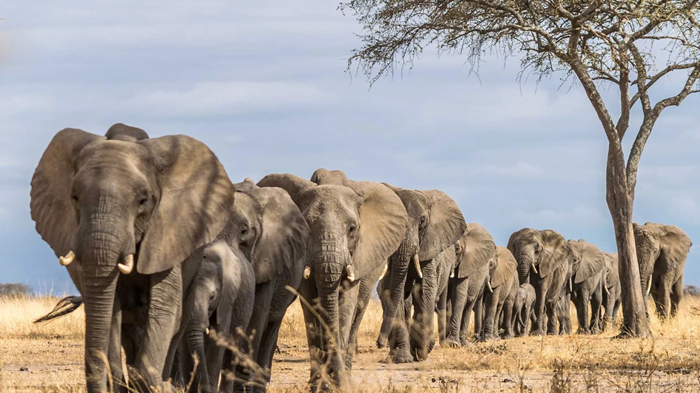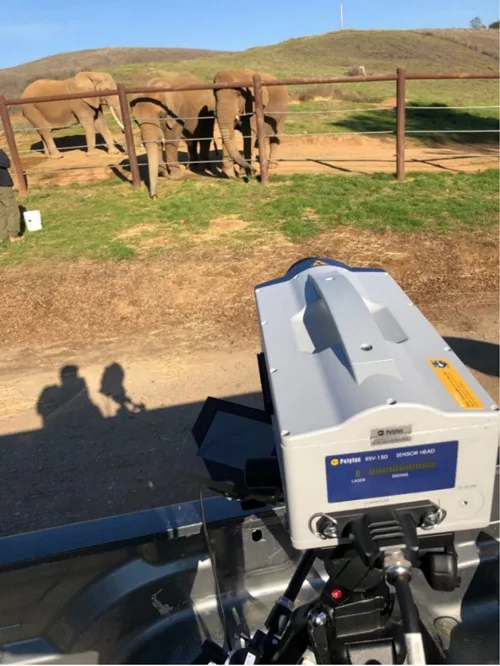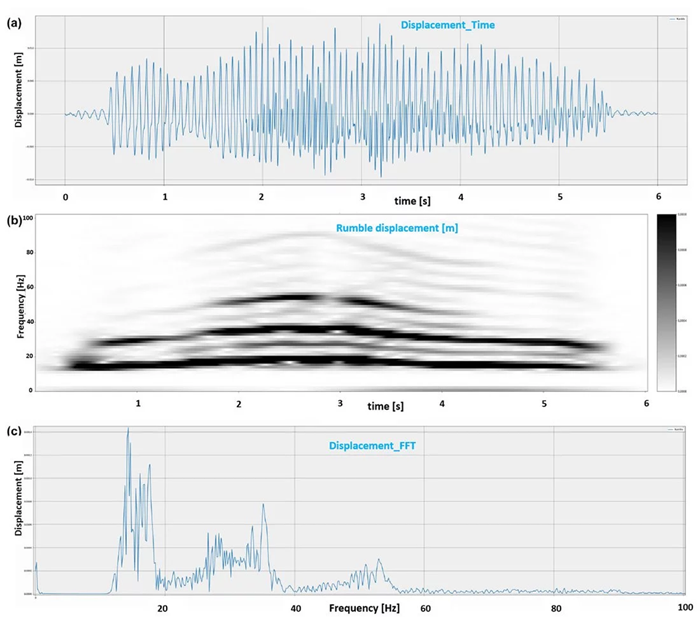In an article published in the European Physical Journal Special Topics, researchers used laser Doppler vibrometry (LDV) to better analyze African elephant vocalizations and their behavioral implications.1

Image Credit: hansen.matthew.d/shutterstock.com
The study’s primary goal was to understand the dynamics of vocal exchanges between elephant groups, with a particular emphasis on a specific vocalization known as the "let's go" rumble.
These rumbling patterns are essential for coordinating elephant group movements, spatial connections, and strengthening social bonds.
Experimental methodology
The researchers performed their investigation on a herd of captive African elephants in a large, open field setting. Their novel approach entailed using LDV technology, a non-invasive technique for remotely measuring the velocity of surface vibrations without requiring direct physical contact.
This technique has received widespread recognition for its uses in a variety of sectors, including engineering, biomedical research, and animal communication studies.
LDV's exceptional ability to capture vibrations, especially in the infrasound region (below the range of human hearing), makes it a suitable tool for researching low-frequency elephant vocalizations.
In the context of this study, a specific elephant from the group was chosen for LDV monitoring. The LDV non-contact vibration measuring instrument was configured to focus on this individual. When this elephant made a rumbling vocalization, the LDV technology accurately detected the vibrations and captured the vocalization in detail.
This method enabled the researchers to collect data with unparalleled accuracy, providing insights into the acoustic properties of these vocalizations.

Figure 1. LDV measurement. Image Credit: Courtesy of Authors
Acoustic characteristics of elephant rumbles
The collected data showed crucial structural parameters of the rumbling vocalization. For example, a typical rumble lasted around five seconds, with a fundamental frequency of 17-20 Hz, and two different harmonics at around 40 and 60 Hz (Figure 2).
These comprehensive measurements aid in characterizing and distinguishing individual vocalizations, which could potentially offer insights into the emotional and physiological state of the elephants at the time of vocalization.

Figure 2. Acoustical signature of "Let's go" rumble. Image Credit: Courtesy of Authors
The "let's go" rumble, which was the primary focus of this study, is a distinct and highly relevant vocalization in the elephant society. It is typically associated with the start of group movements.
The LDV recordings revealed that the "let's go" rumble is characterized by a longer duration, typically exceeding ten seconds, and a specific pattern of low-frequency infrasound modulation.
Understanding the properties of this vocalization is critical in determining how elephants coordinate their group movements and perform collective actions.
Behavioral implications
The study's findings have important implications for our understanding of elephant behavior and communication. The LDV technology used in this work has several implications for elephant bioacoustics and behavioral ecology.
One of the most important results is accurately identifying the caller during vocalization bouts. This is useful in understanding the dynamics of vocal interactions in elephant groups and potentially determining leadership roles within these societies.
Elephant societies are complex, and leadership is critical in their coordination and decision-making processes. LDV can offer useful information on these intricate dynamics, potentially assisting researchers in identifying elephant groups' social structure and hierarchy.
The technology has practical advantages over previous methods for analyzing animal vocalizations. Voice-activated collars, for example, have been used to track individual animals' vocalizations.
These systems, however, can be expensive, difficult to use in the field, and may disrupt the animals' natural behavior. LDV, on the other hand, is noninvasive and remote and can be used in field investigations to record vocalizations of known individuals within family groups, even in the wild, without interfering with their natural activity.
Applications and future research
In conclusion, this research is a big step forward in using LDV technology to improve our understanding of elephant vocal communication.
The ability to detect individual callers within vocalization sequences and record their vocalizations with great accuracy provides new options for animal behavior research. This study's potential applications are far-reaching.
Understanding how vocalizations help coordinate group movements and actions among elephants may affect their conservation and management. In the wild, it might help to follow and preserve elephant herds, offering insights into their social interactions and facilitating the mitigation of human-elephant conflicts.
The technology's non-invasive nature makes it an important tool for future studies on a broad range of animals. Identifying callers within a group can be difficult, but LDV provides a promising solution. Researchers investigating other species with complex social structures and communication systems can adapt this technology to their studies.
In conclusion, integrating LDV into the study of elephant vocalizations marks a big step forward in our understanding of these majestic creatures and their complex societies.
As technology advances, we can expect even more profound insights into the lives and behaviors of elephants, as well as many other animal species, contributing to their conservation and our comprehension of the natural world.
References
- Who is calling: proof of concept for the use of laser Doppler vibrometry in identifying individual callers within African elephant vocalization bouts; Caitlin E. O’Connell-Rodwell, Jodie L. Berezin, Kilian Shambaugh, Ed Stewart; doi.org/10.1140/epjs/s11734-022-00704-5 · 2022, The European Physical Journal Special Topics, № 2, p. 253-259
About Polytec
For over 50 years Polytec has provided high-technology, laser-based measurement solutions to researchers and engineers. Our commitment is to provide the most precise and reliable optical instruments and sensors available for non-contact measurement, setting Polytec apart from the competition as the gold standard in the design and manufacture of vibrometer and velocimeter systems. Our innovations answer many pressing manufacturing and engineering challenges.
Polytec was founded in 1967 to distribute commercial laser technology to industrial and research markets. Building on the company’s early success, Polytec began to develop and manufacture innovative laser-based test and measurement instruments in the 1970’s. These products have become known around the world as the gold standard in non-contact, laser-based measurement of vibration, speed and length.
Advanced product development remains a core strategic activity at Polytec with new electro-optical systems being designed for applications such as analytical process measurement, noise analysis, and factory automation.
Sponsored Content Policy: News-Medical.net publishes articles and related content that may be derived from sources where we have existing commercial relationships, provided such content adds value to the core editorial ethos of News-Medical.Net which is to educate and inform site visitors interested in medical research, science, medical devices and treatments.